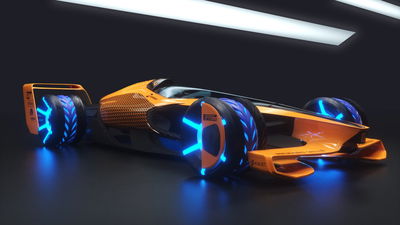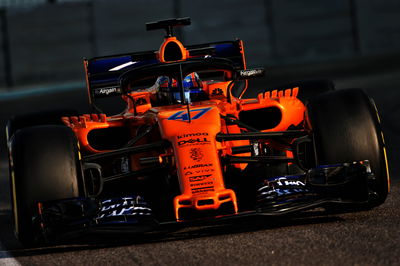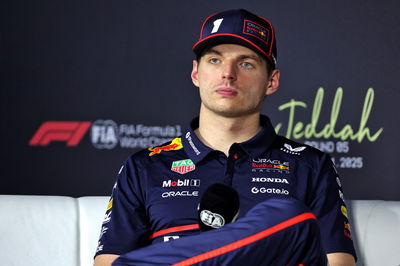McLaren outlines vision for all-electric F1 in 2050
McLaren Applied Technologies has outlined its vision for the future of Formula 1, believing the sport will become all-electric and AI-supported by the year 2050.
In a new concept project entitled 'Future Grand Prix', McLaren's advanced technology arm outlined what it believes F1 will look like upon its centenary in 2050 after completing a research project with fans, combining their feedback with findings from the team's own in-house experts.

McLaren Applied Technologies has outlined its vision for the future of Formula 1, believing the sport will become all-electric and AI-supported by the year 2050.
In a new concept project entitled 'Future Grand Prix', McLaren's advanced technology arm outlined what it believes F1 will look like upon its centenary in 2050 after completing a research project with fans, combining their feedback with findings from the team's own in-house experts.
McLaren Applied Technologies' concept car - dubbed the 'MCLE' - for 2050 sports a far more aggressive design, and is capable of reaching speeds of 500 km/h (310 mph) thanks to active aerodynamics. It benefits from an AI 'co-pilot' for drivers, as well as mixed reality assists such as a heads-up display.
The greater speeds are predicted to prompt a significant change in circuit design, with added banking and a more aggressive look ("think Monza or Fuji, only taller and more sinuous," as per McLaren). The tracks would nevertheless come closer to city centres, taking place in 'smart cities'.
McLaren Applied Technologies also predicts that F1 will become all-electric by the year 2050, coming in line with a global shift towards electrification.
"Speaking to our Formula 1 fan research groups, they understood the reality that governments around the world are driving for widespread adoption of zero-emission vehicles. In the UK for example, there are plans to ensure all new cars will be 'effectively zero-emission' by 2040," MAT said.
"Therefore, we believe it's fair to say that by 2050 grand prix racing will be all-electric. Electric vehicles are currently winning the long-raging battle against hydrogen-powered cars, and we envisage a car with a small electric motor married to a flexible battery, with the potential to be moulded into the aerodynamic form of the bodywork.
"Charging technology may even become a DRS-replacement: within a defined window, the car may be able to steal energy from the one ahead, keeping fans on the edge of their seats."
"Whether it will be possible in 2050 to fully charge the battery of a grand prix car from flat in less time than it takes a current Formula 1 car to complete a flying lap around the streets of Monaco is difficult to say at this stage," said Stephen Lambert, Head of Automotive Electrification at McLaren Applied Technologies.
"But charging about 10 to 50% of the battery in around 10 to 30 seconds is conceivable. Charging wirelessly sees electromagnetic induction used to transfer energy through an air gap from one magnetic coil buried under the track to a second magnetic coil fitted to the car.
"When the car is sufficiently positioned for the coils to be aligned, it will induce a current in the car’s coil which feeds into the battery."
You can see the full details of McLaren Applied Technologies' vision for 2015 here.











